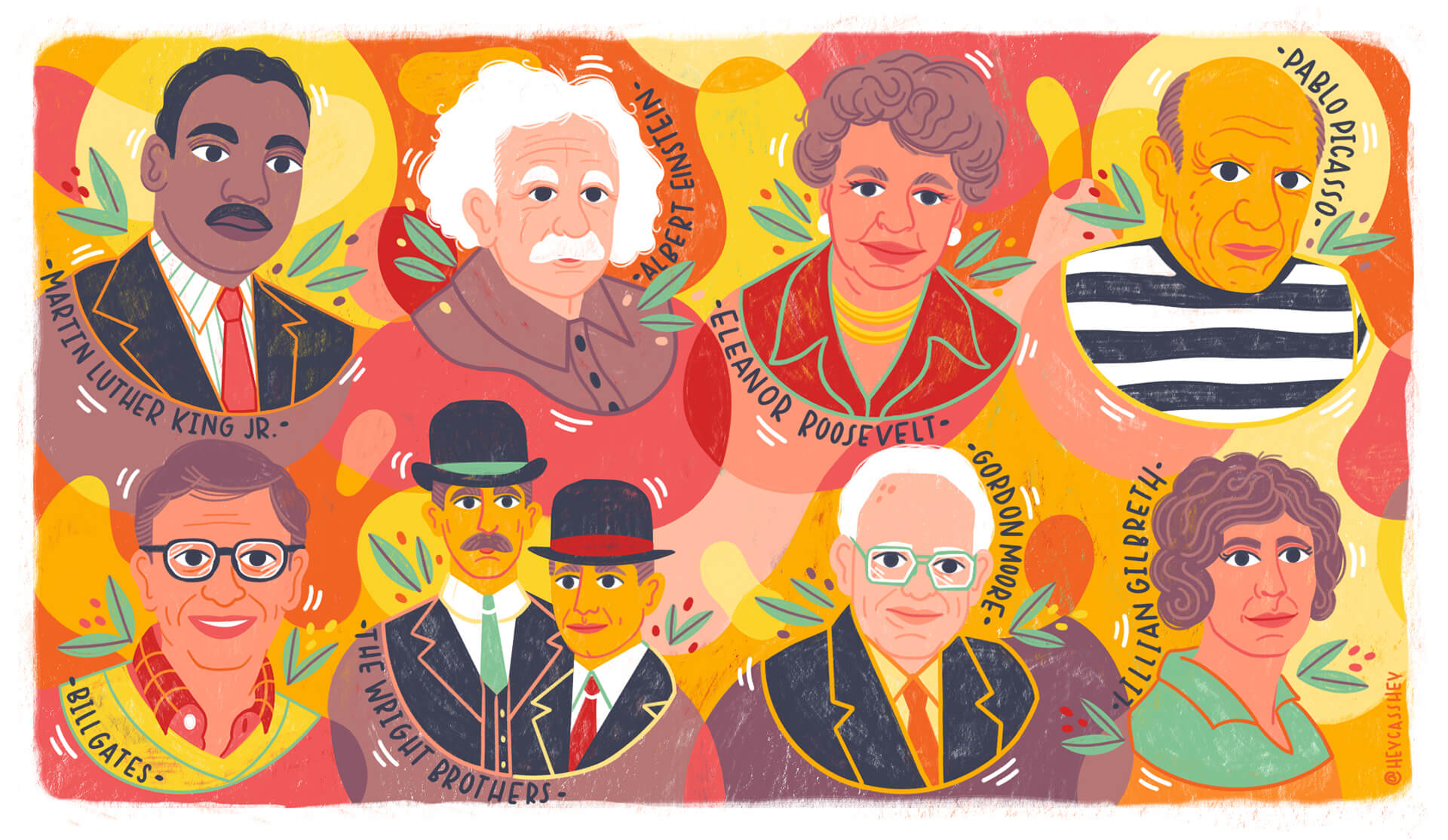The Engineers of 2020
In 2004, the National Academy of Engineering published a report imagining the engineer of 2020.
In the NAE’s vision, she or he would lead rather follow societal and technological changes, leveraging then-emergent developments in nanotechnology, logistics, biotechnology and high-performance computing, as well as improvements in engineering education, to become a modern-day superhero. Specifically, the Engineer of 2020, according to the report, would have “the ingenuity of Lillian Gilbreth; the problem-solving capabilities of Gordon Moore; the scientific insight of Albert Einstein; the creativity of Pablo Picasso; the determination of the Wright brothers; the leadership abilities of Bill Gates; the conscience of Eleanor Roosevelt; and the vision of Martin Luther King Jr.”
Sixteen years later, USC Viterbi Dean Yannis C. Yortsos sees the fulfillment of a national vision.
In a letter to USC Viterbi graduates, Yortsos wrote: “No one could have possibly imagined in 2004, or since then, that the engineer of 2020 would be graduating under the most exceptional circumstances. But you are very special. And I am very confident in stating that you are spectacularly and uniquely equipped among all your peers to not only manage today’s unprecedented disruption but more importantly to be the leader of the future rapidly unfolding in front of you, to engineer a better world for all humanity, a goal more urgently needed than ever before.”
Here are some of the more distinguished engineers in the historic class of 2020, which included 673 undergraduates and 2,608 master’s and 172 doctoral students. In their own unique way, each of the following recent alumni embodies one of the special attributes identified by the NAE all those years ago.
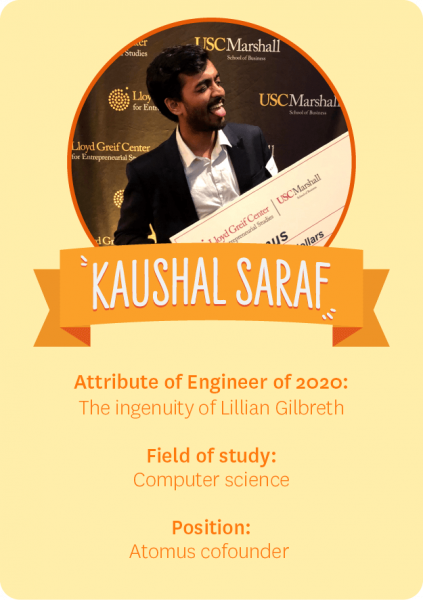 Kaushal Saraf has long considered himself a problem-solver. Saraf, who earned a master’s degree in computer science, first demonstrated that aptitude in junior high in his native India. As a seventh grader, he designed a simple desktop application for a local pharmacy that simplified and expedited the store’s billing process. A few years later, he and some friends at the prestigious Manipal Institute of Technology invented a popular mobile app called EventBuzz. Tired of missing cool school events, the group built the app to list hundreds of student club activities in one place. Like the efficiency expert Lillian Gilbreth, who greatly contributed to the field of industrial engineering, Saraf looks for ways to streamline and improve procedures. “I operate with a solutions-based approach,” he said. “I try to find the pain point of a particular situation and figure out if there’s a way I could tackle it with technology.
Kaushal Saraf has long considered himself a problem-solver. Saraf, who earned a master’s degree in computer science, first demonstrated that aptitude in junior high in his native India. As a seventh grader, he designed a simple desktop application for a local pharmacy that simplified and expedited the store’s billing process. A few years later, he and some friends at the prestigious Manipal Institute of Technology invented a popular mobile app called EventBuzz. Tired of missing cool school events, the group built the app to list hundreds of student club activities in one place. Like the efficiency expert Lillian Gilbreth, who greatly contributed to the field of industrial engineering, Saraf looks for ways to streamline and improve procedures. “I operate with a solutions-based approach,” he said. “I try to find the pain point of a particular situation and figure out if there’s a way I could tackle it with technology.
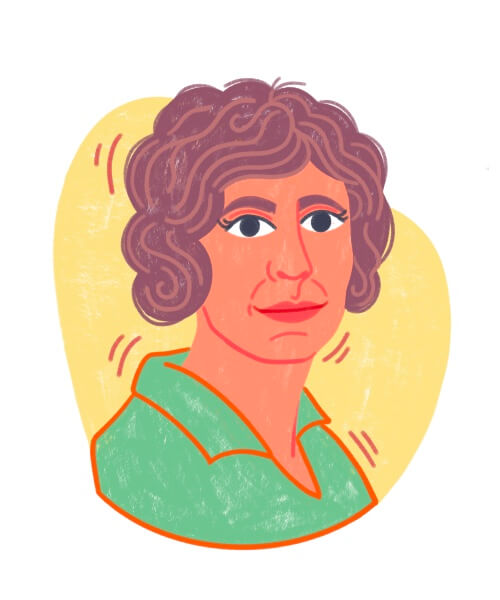
Saraf has brought that can-do mindset to Atomus. The Los Angeles-based startup he cofounded solves a problem that has long bedeviled the US Armed Forces: how to quickly and cheaply replace faulty components in hobbled ships, vehicles and planes and return them to service as quickly as possible.
Defense contractors sometimes charge exorbitant prices for rare spare parts, which can take months or even years to produce. They also worry about sharing 3-D design files. While the military could make design files and 3-D print parts themselves, rigorous testing takes time and resources, leaving important equipment in maintenance. Atomus, Saraf said, has developed technology that allows defense contractors to license their 3-D design files to the Marine Corps and the Air Force (with which Atomus already has contracts), making possible pay-per-print 3-D printing. “We bridge the gap between defense contractors and the military,” Saraf said. “With our solution, defense contractors are going to make money and protect their IP, while the military is going to get what it wants much faster and at comparatively cheap prices.”
Atomus, which Saraf cofounded with undergraduate computer science major Joel Joseph, has generated lots of excitement, winning the 2019 USC Hacking for Defense (H4D), making the finals of this year’s Maseeh Entrepreneurship Prize Competition, and taking first place — and $100,000 in prize money — in the inaugural Liftoff List competition by besting 225 student teams from 68 schools across America. Atomus’s success validates Saraf’s decision to quit his position as a software engineer at Goldman Sachs in 2018 to come to USC. “With the backing of the Trojan network, I’ve been able to experiment with new things and find out what makes me tick,” he said. “I like doing my own thing as an entrepreneur.”
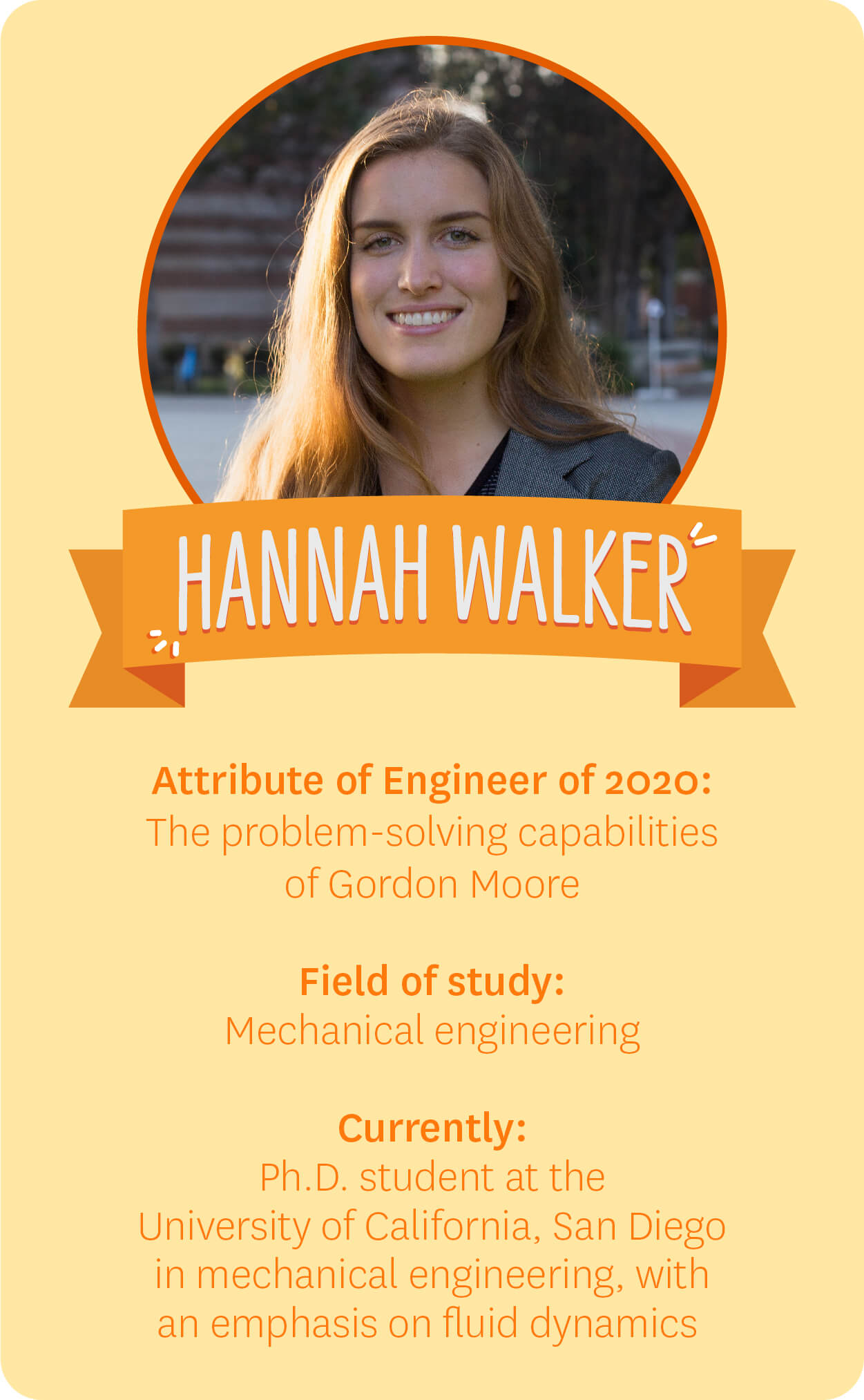 When Hannah Walker asked to become a researcher for Patrick Lynett, the professor of civil and environmental engineering gave her a challenging problem to solve: create a device that could inexpensively map the ocean’s underwater topography or accurately measure its depth.
When Hannah Walker asked to become a researcher for Patrick Lynett, the professor of civil and environmental engineering gave her a challenging problem to solve: create a device that could inexpensively map the ocean’s underwater topography or accurately measure its depth.
Walker spent that summer holed up in her father’s garage in Del Mar, California, working with sensors and microcomputers and performing tasks ranging from soldering components to writing hardware control code. After much trial and error, she embedded a waterproof sensor package inside a body board. Then Walker personally tested her creation: She paddled her board around the San Diego shore — 100 meters out and then 60 meters in one direction — and collected a large set of bathymetry (ocean depth) data. Afterwards, she constructed a 3-D map of the underwater topography of the areas she visited. Along the way, Walker landed a Rose Hills Research Fellowship, two USC Provost Research Fellowships, and later took first place in the 2019 International Mechanical Engineering Congress and Exposition (IMECE).
Walker’s work impressed Lynett. However, he challenged her again, encouraging Walker to develop a more user-friendly instrument that didn’t require a person to swim in the surf to gather data.
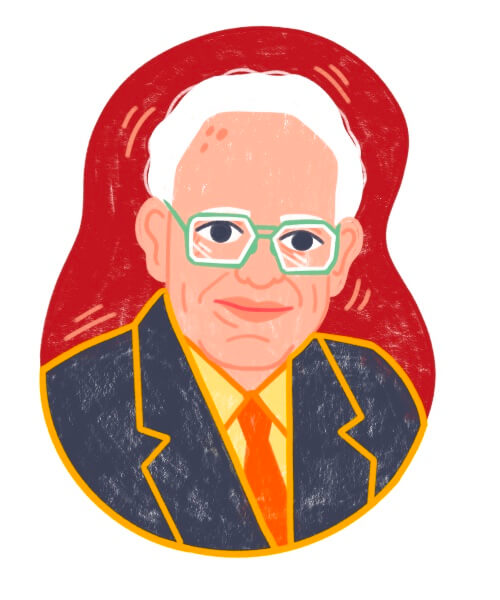
For her senior design project, Walker led a team of engineering undergraduates in programming a small boat to autonomously gather information of the ocean’s subsurface topography. For $500, the team bought a 2-by-1-foot, remote-controlled boat from Amazon.com and modified it. They removed all of the vessel’s electronics and replaced them with a custom-built circuit board attached to a small computer, building a low-cost instrument that could autonomously gather coastal information. In May, Walker and her innovative research won the prestigious USC Discovery Scholar Prize, which comes with $10,000.
Just like Gordon Moore, the cofounder of Intel and namesake of Moore’s Law, Walker applied her formidable mind to solving a seemingly intractable challenge. “Hannah has that unique combination of great intellect, confidence, creativity and social intelligence that I have only seen a handful of times in my career,” Lynett said.
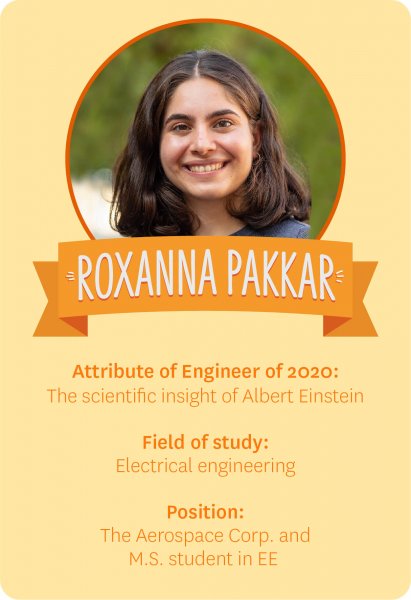
As a ninth grader at the Westchester Enriched Sciences Magnets in Los Angeles, Roxanna Pakkar cofounded the high school’s robotics team, and over the years developed an affinity for “learning about technology as a tool to help people and the planet,” she said.
So at USC Viterbi, Pakkar knew exactly whom she wanted to work with: Maja Mataric´, a pioneer in socially assistive robotics. The Chan Soon-Shiong Chair and Distinguished Professor of Computer Science, Neuroscience and Pediatrics “took a chance on me,” Pakkar said, and the 2020 winner of the Viterbi Award for Outstanding Research, ended up working in Mataric´s Interaction Lab her entire time at USC, making important contributions to several projects.
For a study that placed socially assistive robots in the homes of 17 children with autism for at least 30 days, Pakkar optimized the hardware to make the robots safer, she said. In the study, led by professors Matarić and Gisele Ragusa, the children sat with their parents or other family members and played space-themed math games while the robots interacted with them, personalizing their instruction and feedback to each child’s unique learning patterns. At the end of the study, all the children demonstrated improved math skills, while 92% also improved their social skills. “That’s ultimately why I went into engineering — to help people’s lives, to make a difference,” said Pakkar, whose late father encouraged her to enter the field.
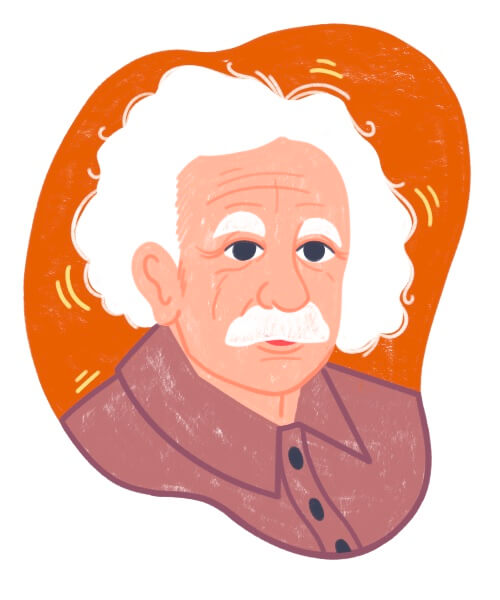
A tireless researcher, Pakkar also interned at NASA’s Jet Propulsion Laboratory, working with a multidisciplinary team investigating how to rapidly and inexpensively build swarms of robots with open-source hardware and software that could be used to test algorithms in the real word. As co-author of an accompanying paper, Pakkar shared the group’s findings at the 2019 IEEE Aerospace Conference in Big Sky, Montana. Later that year, she presented two papers at the prestigious 2019 IEEE International Conference on Robot & Human Interactive Communication (Ro-MAN) in New Delhi — the only undergraduate to make a presentation.
That same year, Pakkar led a team of five USC Viterbi undergraduate women to create Marlink, which worked to research and develop an underwater wireless communication technology that could allow greater exploration of the ocean at a lower cost than currently possible. Marlink went on to become one of the five teams that represented the United States at the 2019 Global Grand Challenges Summit student competition finals in London, along with groups from both the United Kingdom and China.
“Roxy has an outstanding aptitude for research and is a joy to work with, always ready to learn and push herself beyond her comfort zone,” said Matarić, who nominated Pakkar for the Viterbi research award.
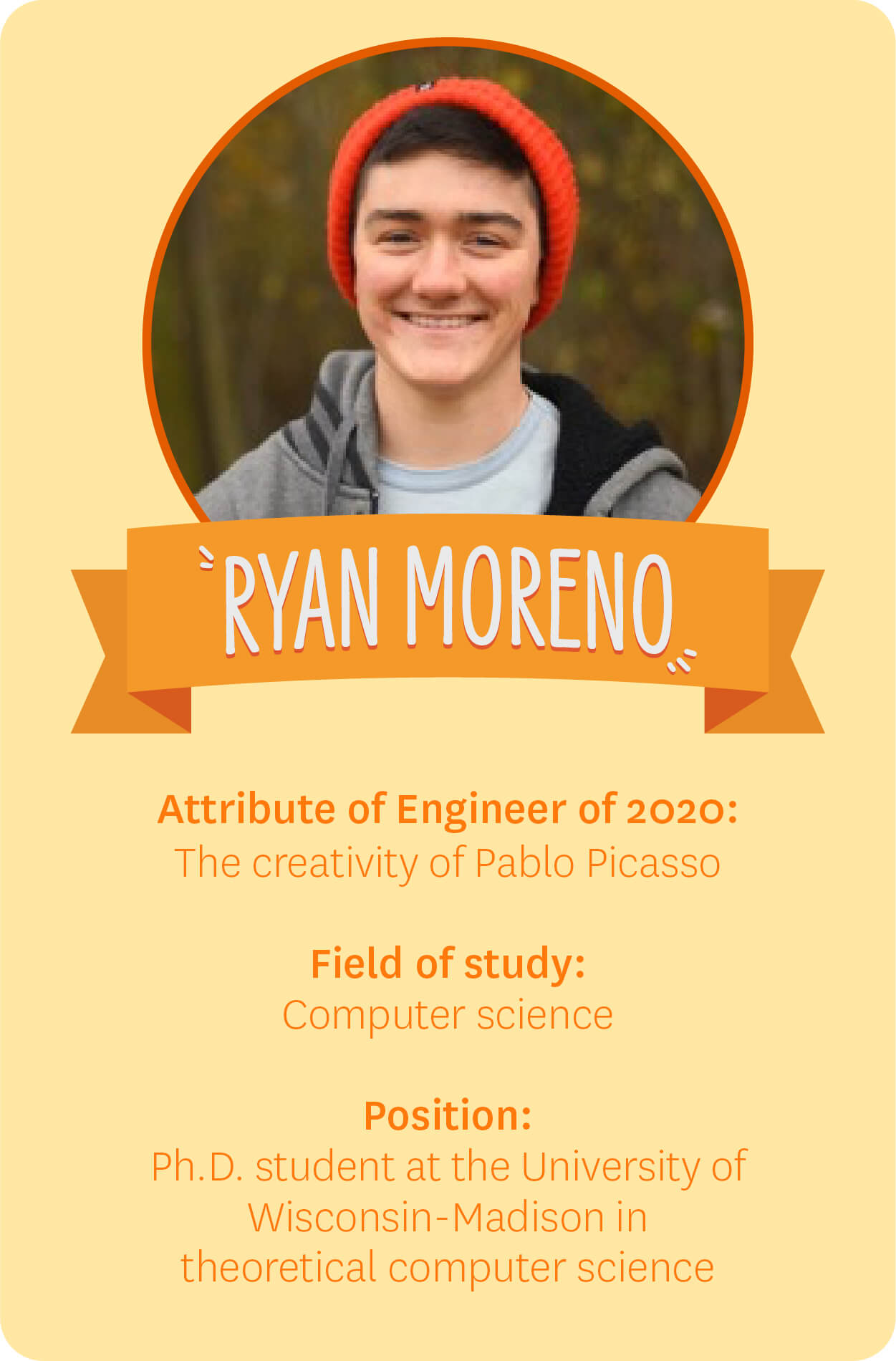 As a USC Viterbi freshman, Ryan Moreno would flippantly tell anybody who asked that he planned to major in “anything but English.
As a USC Viterbi freshman, Ryan Moreno would flippantly tell anybody who asked that he planned to major in “anything but English.
Although a voracious reader, Moreno’s interests leaned more toward math and computer science, the “objective STEM subjects,” in his words. However, his attitude changed after taking philosophy, literature and poetry courses. Instead of seeing the sciences and humanities as oppositional, he began to consider them complementary, and ended up minoring in English.
“The communication skills I’ve developed through English are crucial to my current and future career in teaching and researching computer science,” said Moreno, who this fall will start a doctorate program in theoretical computer science at the University of Wisconsin-Madison. “Reciprocally, CS has offered me unique tools to quantitatively analyze the subjective matter of language.”
The 2020 Renaissance Prize winner demonstrated his ability to creatively bridge the gap between the quantitative and qualitative when he penned a research paper his junior year on automated poetry generation.
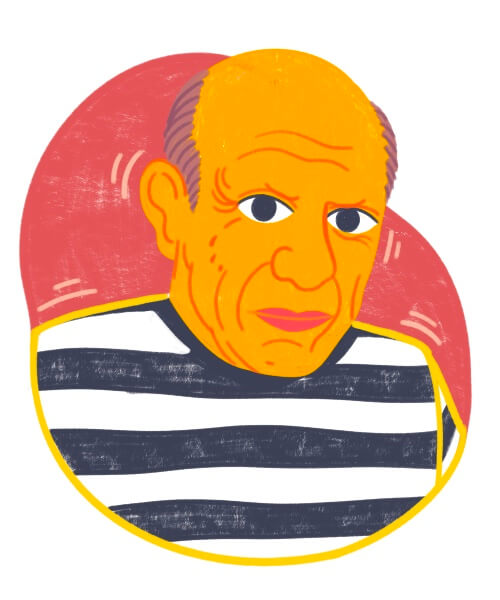
In the simplest terms, Moreno described how to develop a computer program that could write grammatically correct poetry that, he said, “readers might find interesting and enjoyable or that could give poets inspiration or ideas.” In his paper, which won the Viterbi Award for Best Research Paper, Moreno suggested modifying existing deep learning techniques to apply to automated poetry generation. Just as Pablo Picasso came up with a new way of artistically expressing himself by co-inventing cubism, the early 20th century art movement that deconstructed traditional images and transformed them into geometric shapes and interlocking planes, Moreno’s innovative approach to automated poetry generation could, in theory, lead to richer, more sophisticated computer-generated poetry than previously possible.
For his senior project, Moreno opted not to continue with automated poetry generation because of the complexity involved in testing his hypothesis in the real world — challenges that included training neural networks in poetry and applying deep learning techniques from the image domain to natural language processing. Instead, he worked with the Intelligence and Knowledge Discovery research lab on campus to develop a computer model that could classify the mention of locations, organizations and people within tens of thousands of texts far more efficiently than existing models.
Moreno and his group published their findings in the journal of the Association for Computational Linguistics. As he did with automated poetry generation, Moreno had again found a creative way to unite language and computer science. “My graduate research in computational theory will require creative thinking, the ability to collaborate and build on others’ work, and the capacity to effectively communicate my roadblocks and discoveries, all skills I’ve developed in part through my English studies,” he said.
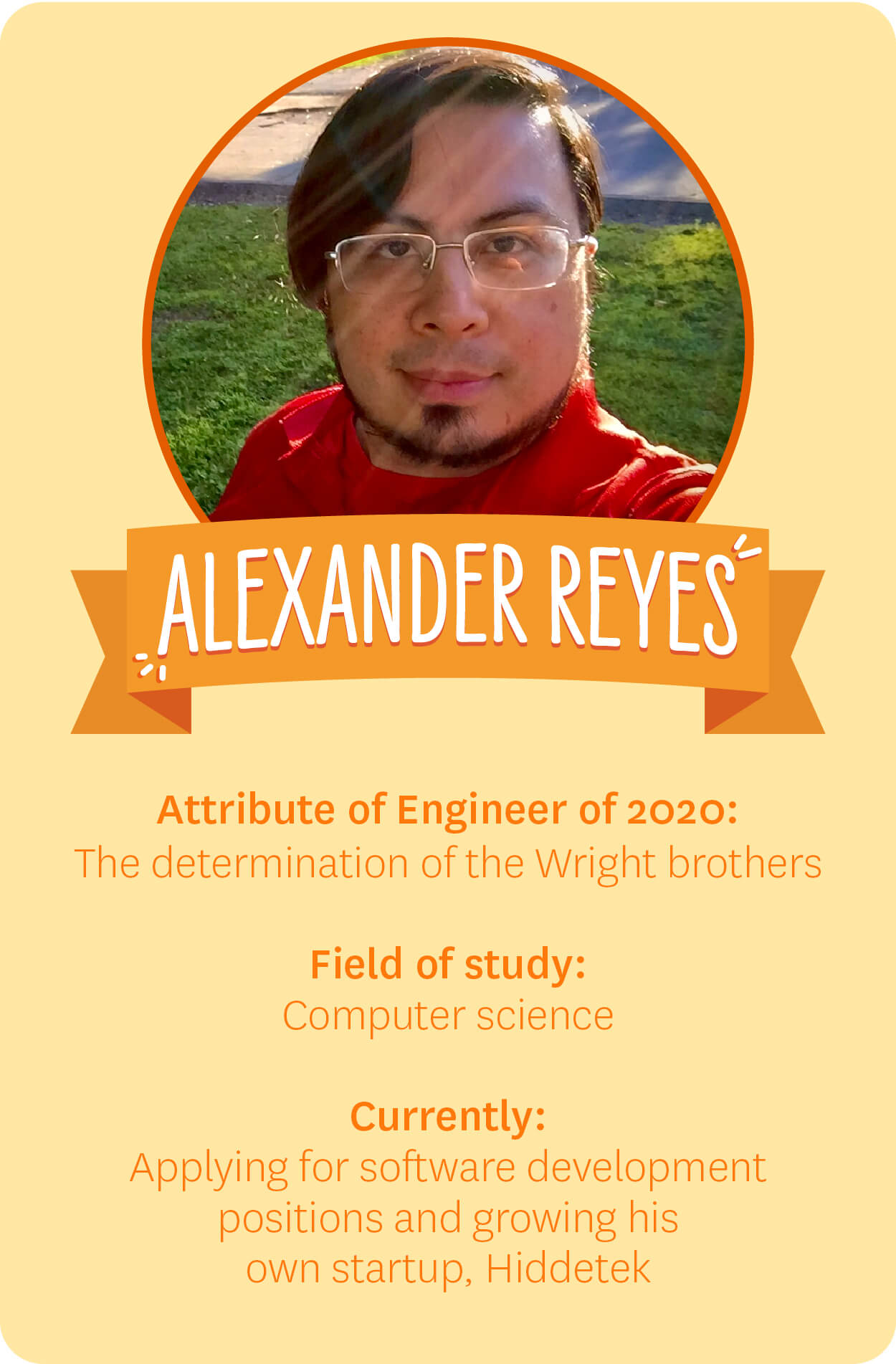 On May 15, Alexander Reyes became the first in his family to graduate from college. The 36-year-old’s journey was anything but easy.
On May 15, Alexander Reyes became the first in his family to graduate from college. The 36-year-old’s journey was anything but easy.
A native of Bogotá, Colombia, Reyes moved to Los Angeles in 2007 after learning English. He enrolled in Los Angeles Trade Tech community college and earned his associate’s degree in computer information systems. Along the way, he met and married his wife, Marcella, and had three boys, Daniel, Jonathan and Isaac. After working for a decade in the technology field, Reyes transferred to USC Viterbi at encouragement his uncle.
Reyes experienced a tough transition, especially since he continued to work 20 hours a week to support his family. Additionally, he said, his classmates’ brilliance, coupled with their relative youth, made him feel “alone and ostracized. I had to battle voices in my mind that said, ‘You don’t belong here. You are not smart enough.’”
Reyes spent many a night in the library poring over his notes. Sometimes he even slept there, much to the chagrin of his wife and children. His faith and family kept him going.
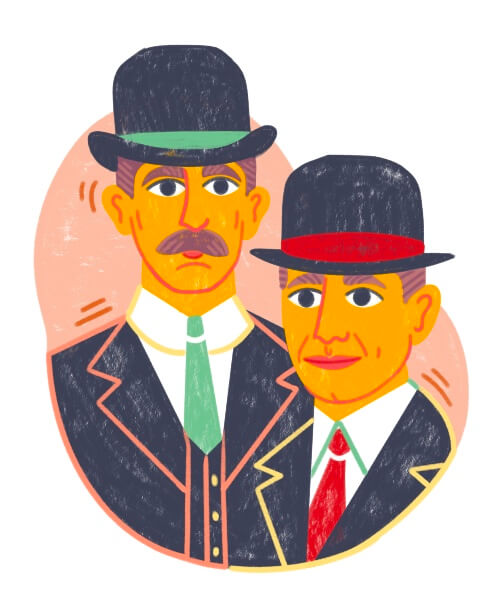
Reyes’s first semester grades fell short of his expectations, including his first-ever C. But like the Wright brothers, who invented, built and successfully flew the world’s first airplane in 1903 after years of failure, Reyes redoubled his efforts. He never thought of quitting, especially since his wife went back to work to alleviate the financial stress on their family. Reyes’s grades improved dramatically, and he even made the dean’s list twice.
Reyes is currently applying for software development positions while simultaneously growing his startup, Hiddetek, which creates data management systems for schools, companies and organizations.
Whatever he ends up doing, Reyes is motivated to succeed. “I want to work hard to be able to show my wife and kids a different type of life — like something from a dream,” he said, adding that he feels his USC Viterbi education has prepared him well for the future. “Going here showed me I am able to compete and do a high-quality job and the things that make me special.”
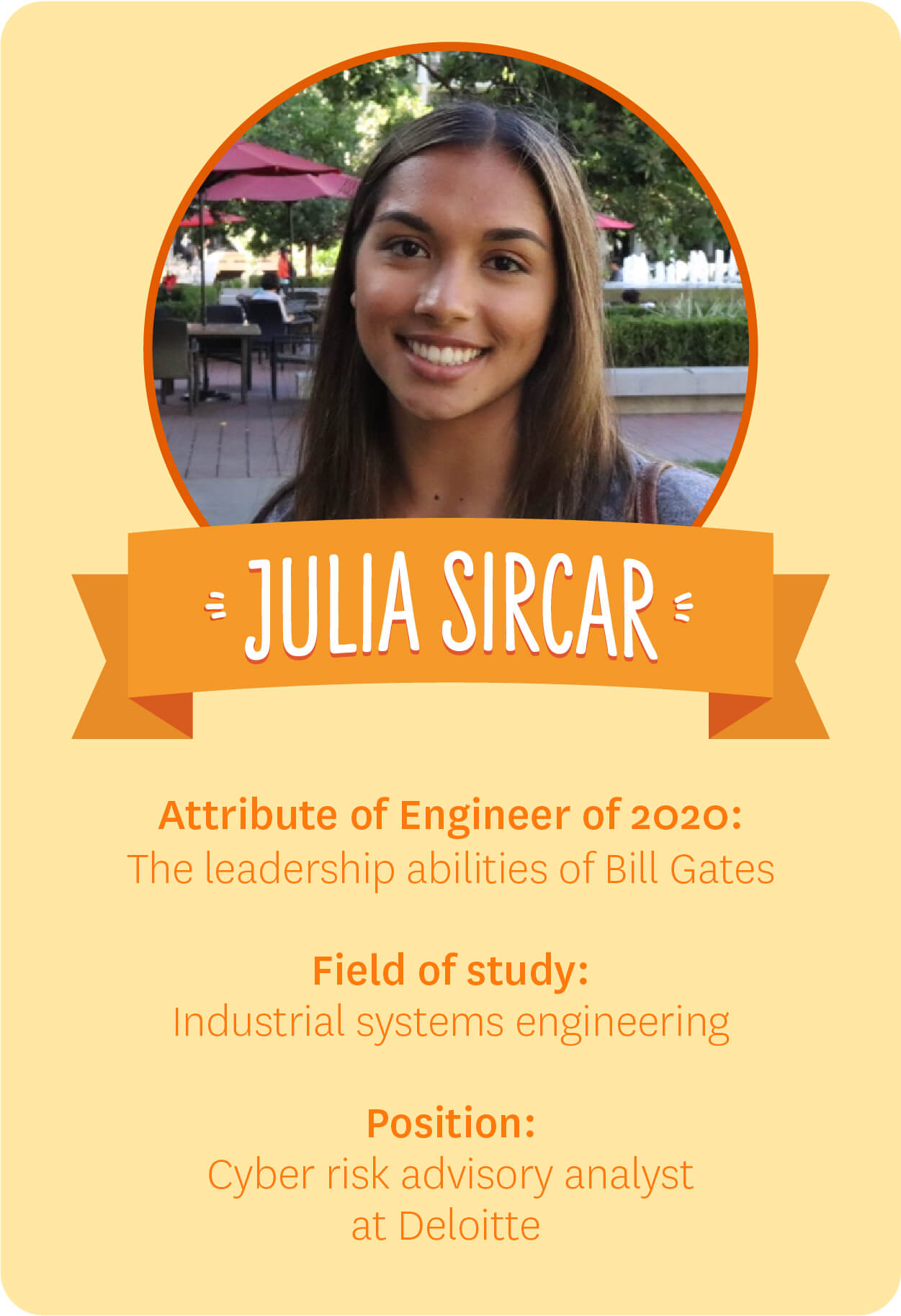 When Julia Sircar received an unexpected phone call in late March, she listened intently.
When Julia Sircar received an unexpected phone call in late March, she listened intently.
On the line was Najmedin Meshkati, professor of civil and environmental engineering, industrial and systems engineering, and international relations, whom Sircar knew through her work as a Freshman Academy coach. Meshkati was contacting Sircar, along with other members of USC Viterbi’s Grand Challenge Scholars Program, to gauge their interest in participating in the National Academy of Engineering’s Call to Action, an initiative designed to solicit ideas from engineering students and professionals nationwide for solutions to the COVID-19 pandemic. Even though Meshkati had reached Sircar during spring break, she didn’t hesitate. “I wanted to help those who were harmed by the pandemic anyway I could,” she said.
Sircar assumed a leadership role, co-chairing a national committee that made initial proposal assessments. She and a team of three other USC Viterbi seniors — co-chair Celeste Goodwin of aerospace and mechanical engineering, and Soraya Levy and Rosie Halpin, both of industrial and systems engineering — pored over 400 submissions, ranging from technologies related to contact tracing and testing to ideas for social distancing apps. Sircar and Goodwin even created a rubric for evaluating project ideas. When school ended in May, Sircar and Goodwin could have easily walked away from the initiative. Instead, the newly minted graduates began working on a new Call to Action project.
The pair partnered with the cofounder of the Call to Action, a recent Duke civil engineering graduate, Rachael Lau, and Rachel Figard, an industrial engineering senior at North Carolina State University, to create an Instagram account to encourage K–12 students to pursue STEM degrees. Sircar and Goodwin also collaborated with the USC Office of Technology, Innovation and Entrepreneurship to put on a three-week virtual program for high school students called USC Technology Innovation Bootcamp 4HS: Fighting COVID19.
“We want to showcase to them what being an engineer really means in a time of uncertainty, and what engineering really means when a lot of problems need to be addressed,” Sircar said.
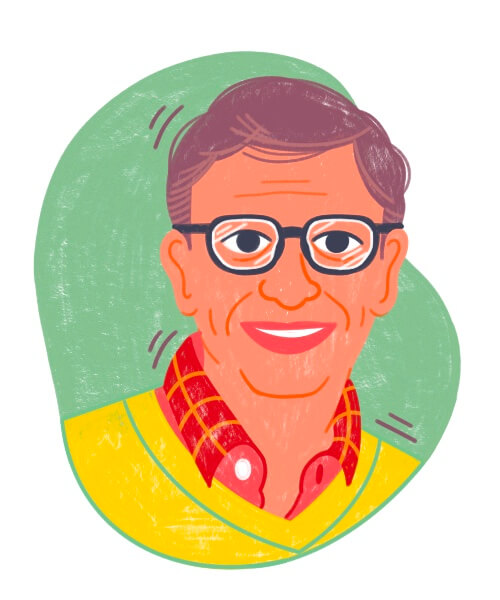
She also displayed strong leadership abilities as president of Tri Delta. Under her direction, the sorority won the Trojan Greek Award for diversity and inclusion, one of the highlights of her time at USC. Additionally, Sircar served as vice president of chapter relations and vice president of communications for the USC chapter of the Institute of Industrial Systems Engineers.
What makes Sircar such an effective chief? “I think that a good leader is a good listener, first and foremost. A good leader gets diverse input from many people before making a decision,” she said. “A good leader puts their community’s needs and wants before their own.” Bill Gates, philanthropist and cofounder of CEO of Microsoft Corp., couldn’t have said it any better.
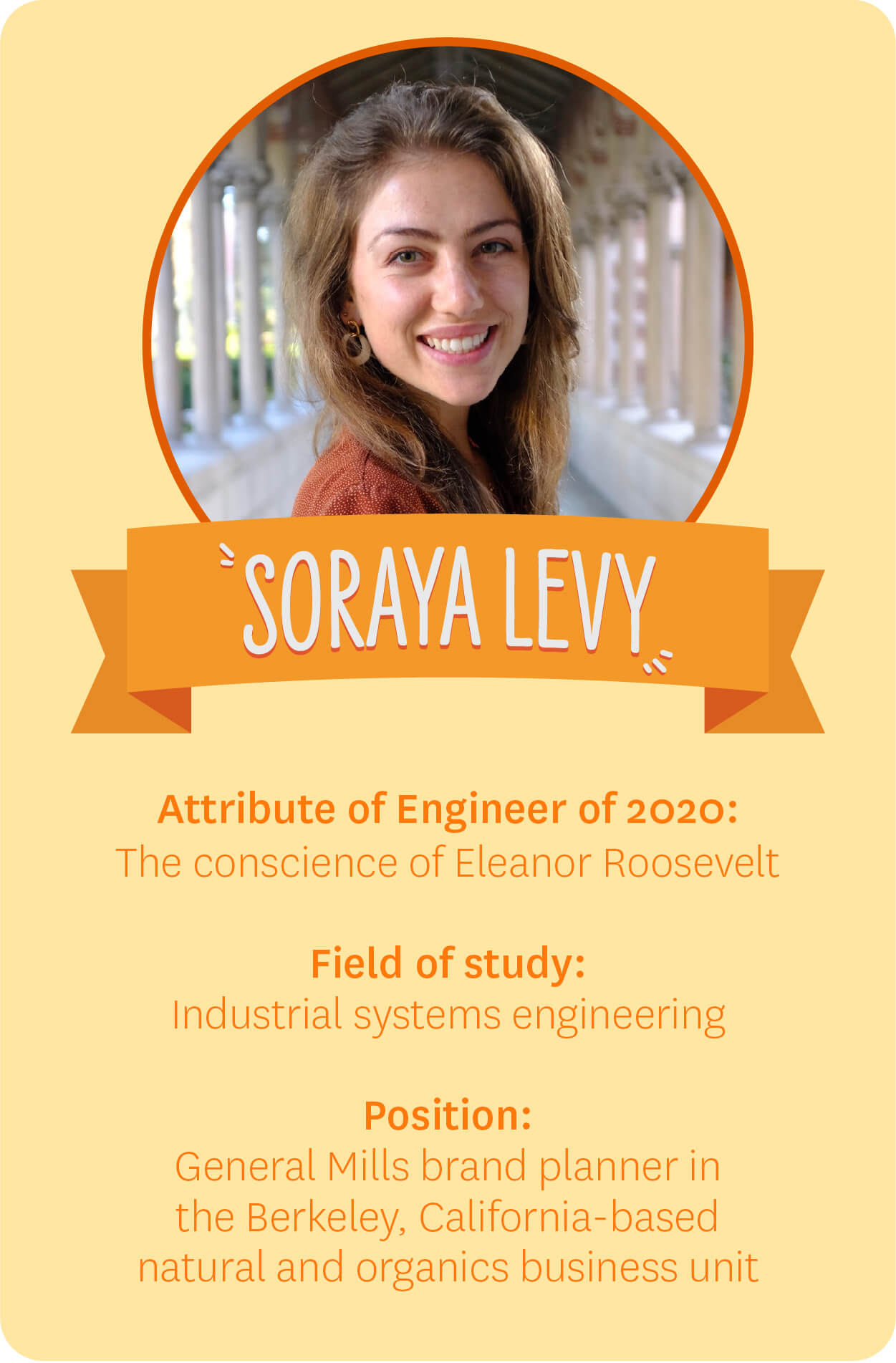 Growing up in Northern California, Soraya Levy had an abiding passion for the environment and the need to protect it. Whether admiring Monterey’s ocean sunsets, marveling at the redwood forests of Muir Woods or enjoying hikes in Big Sur, “I felt consumed by nature’s beauty,” she said. At the same time, Levy, a recent Grand Challenges Scholar and recipient of the Student of the Year Award from the Daniel J. Epstein Department of Industrial and Systems Engineering, developed an interest in fashion, particularly the sustainable kind. At USC Viterbi, she found a way to combine both passions.
Growing up in Northern California, Soraya Levy had an abiding passion for the environment and the need to protect it. Whether admiring Monterey’s ocean sunsets, marveling at the redwood forests of Muir Woods or enjoying hikes in Big Sur, “I felt consumed by nature’s beauty,” she said. At the same time, Levy, a recent Grand Challenges Scholar and recipient of the Student of the Year Award from the Daniel J. Epstein Department of Industrial and Systems Engineering, developed an interest in fashion, particularly the sustainable kind. At USC Viterbi, she found a way to combine both passions.
In 2017, Levy cofounded Bloom Boutique, a nonprofit that promotes sustainable fashion by collecting and redistributing trendy clothes donated by the USC community. The group’s mission: “End the environmental and human toll of fast fashion.” According to the United Nations, fast fashion, a term describing high-volume, low-margin, cheaply produced disposable items, accounts for 10% of global greenhouse emissions and contributes to poor working conditions for textile factory workers.
Bloom Boutique has bought more than 1,000 articles of clothing from USC students, much of which would have otherwise ended up in the landfill. Through the resale of these “young and hip” secondhand shirts, pants, dresses and skirts, Bloom Boutique has made $5,000 in profits, which it has donated to the Downtown Women’s Center, a provider of services to homeless and formerly homeless women.
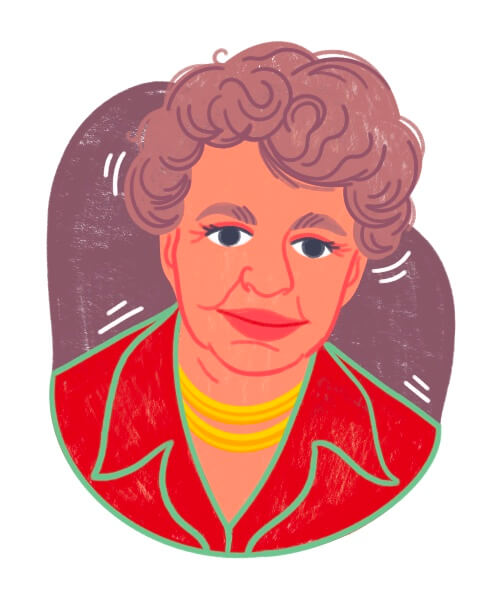
Still, Levy and her colleagues envisioned Bloom Boutique as more than just an upscale Goodwill, much more. Under Levy’s two-year presidency, the nonprofit ramped up its educational efforts about the environmental and social perils of fast fashion by distributing informational pamphlets at events and enriching the content on social media. “We wanted to contribute positively to the global issues surrounding the fast-fashion industry,” Levy said. “We also wanted to make a tangible difference in our own community.”
Eleanor Roosevelt, former first lady and the first chair of the UN Commission on Human Rights, which oversaw the drafting of the Universal Declaration of Human Rights, would see a kindred spirit in Levy, a social activist with a ready smile.
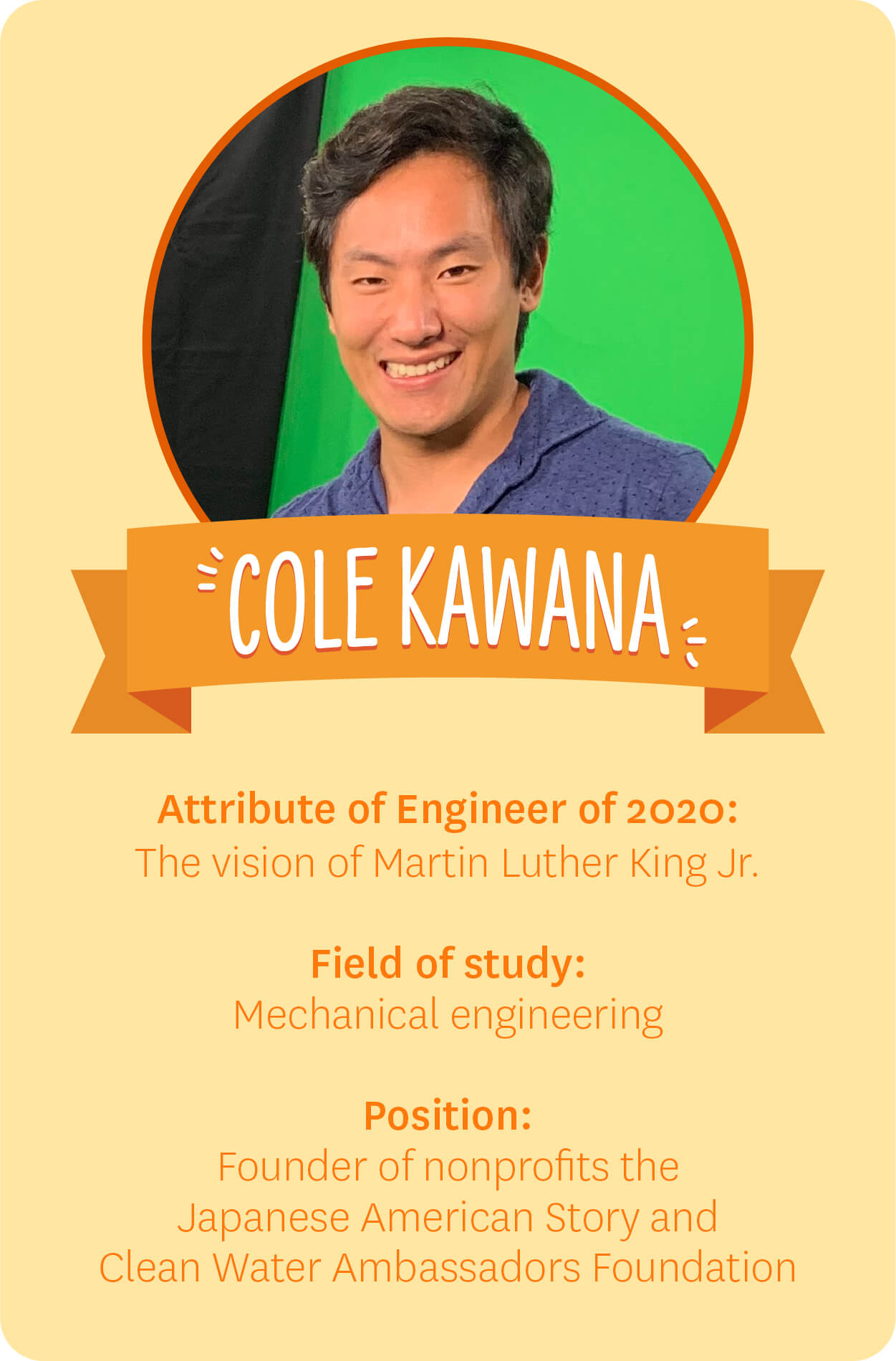 Cole Kawana loves to make movies. He also enjoys numbers, quantitative analysis and AI. Happily, the mechanical engineering graduate has found a creative outlet for his passions. In 2019, Kawana founded Japanese American Story, or JAS, a nonprofit that combines moviemaking with artificial intelligence to bring to life the poignant World War II-era stories of Japanese Americans. “We have a moral obligation to use testimonials to educate others, to ensure that history doesn’t repeat itself,” said Kawana, whose grandparents and great-grandparents were interned in camps during the Second World War.
Cole Kawana loves to make movies. He also enjoys numbers, quantitative analysis and AI. Happily, the mechanical engineering graduate has found a creative outlet for his passions. In 2019, Kawana founded Japanese American Story, or JAS, a nonprofit that combines moviemaking with artificial intelligence to bring to life the poignant World War II-era stories of Japanese Americans. “We have a moral obligation to use testimonials to educate others, to ensure that history doesn’t repeat itself,” said Kawana, whose grandparents and great-grandparents were interned in camps during the Second World War.
JAS, whose avatars could one day be used in the classroom, is creating a life-sized avatar of a Japanese American veteran of the 442nd regimental combat team. Through the marvels of technology, the late Lawson Sakai — or at least his likeness — will respond to students’ questions in real time, ranging from where he was born to whether he forgives those who put his family into internment camps. The avatar will find a permanent home in the Japanese American National Museum in Los Angeles when it reopens.
Kawana said he and his team plan to create four more avatars. Creating one takes lots of work and patience. To make Sakai’s, the team placed him in a greenroom surrounded by 20 cameras, including depth-sensing ones, and asked him 1,000 questions over several days. They transcribed his answers into text, then applied AI, which uses voice-to-text technology. When somebody asks a question of Sakai’s avatar, the AI interprets it and selects the appropriate video clip as a response. “Ideally, this will be as natural as a regular conversation,” Kawana said.

That Kawana’s avatar closely resembles the holograms that the USC Shoah Foundation has produced for its Dimensions in Testimony is no coincidence. Kawana interned at Shoah the summer after his freshman year and worked on improving its artificial intelligence. In the same way that Shoah has raised awareness about Jewish and other victims of genocide with its talking holograms, Kawana hopes his speaking avatars will teach people about the plight of Japanese Americans and increase tolerance and understanding.
“I’ve always been interested in capturing the stories of those who came before us,” he said, “but it is also very important to have this history recorded so that it can be used as an educational tool for future generations to make sure nothing like the Japanese American incarceration can happen again.”




